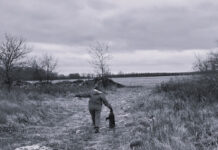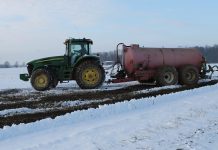Fall alfalfa management is critical to next year’s alfalfa success. While drought conditions in many areas of the state have decreased yields, taking late cuttings to increase this year’s forage yields will be at the cost of next year’s alfalfa yield.
Stressed crops may also benefit from fertilizer applications when needed. With decreased farm incomes this year, it may be tempting to skip a fall fertilizer application, but this may be even more costly to next year’s profitability than the fertilizer application would have been.
Alfalfa fields that are deficient in potassium while going into dormancy are more likely to winterkill or have decreased stand vigor in subsequent years, particularly as a stand ages. Potassium plays a critical role in plant-water relations, photosynthesis and movement of sugars. This means alfalfa not only produces more sugar when potassium tissue concentrations are adequate, but the rates at which those sugars, nutrients and water move throughout the plant are also positively impacted.
More sugars, moving more efficiently through the plant, typically translate into better yield and better energy storage for regrowth in the spring and after harvest. On average, 1 ton of alfalfa removes 60 pounds of K2O.
Fall rest
We recommend that the last harvest be taken by Sept. 7 in northern Ohio and Sept. 15 in southern Ohio. This will allow a fall rest period for alfalfa, which is probably more important than usual this year due to the stressful growing conditions we’ve had with drought conditions in many areas of the state.
Cutting later, Sept. 15 to Oct. 30, will add significant stress to fields that are already in poor condition. Alfalfa needs about 500 growing degree days from its last cutting before a killing frost. For most falls, this is about 3 or 4 weeks, but the exact date of a killing frost can be hard to predict.
The fall period is when tall legumes undergo many physiological responses to the cooling temperatures that prepare the plants to survive the winter. Carbohydrate and protein reserves are accumulated in the crowns and roots during the fall.
Cold-hardening processes also occur that increase plants’ resistance to cold temperatures. Interrupting those processes by cutting could result in the plants having inadequate cold hardiness along with lower energy and protein reserves for good survival through the winter and for initiating vigorous regrowth next spring.
Fall cutting is a stress to the plant, and its effects will be more severe in fields that are currently not in a vigorous condition.
Several factors affect the level of risk incurred with cutting during the critical fall period. These include overall stand health, variety of disease resistance, insect pest stress during the summer, age of stand, cutting management, fertility and soil drainage.
A vigorous, healthy stand is more tolerant of fall cutting than a stressed and weakened stand. Alfalfa fields that were stressed by wet soil conditions in the spring, along with leafhopper feeding, are in a compromised condition. The fall rest period will be very important to their recovery and future productivity. Alfalfa varieties with high disease resistance and good levels of winter hardiness will be more tolerant to the negative effects of a fall cutting because there is less total stress on the plant.
Cutting frequency
Alfalfa that has been cut three or more times before a fall harvest has a higher risk factor for injury from fall harvesting. The cutting frequency during the growing season can affect the energy status of the plant going into the fall.
Frequent cutting, 30-day intervals or less, results in the plant never reaching full energy reserve status during the growing season. This makes the critical fall rest period more necessary for plants to accumulate adequate reserves before winter.
Alfalfa stands on well-drained soils tolerate later fall cuttings better than alfalfa on moderately or poorly drained soils.
Low plant cover going into the winter from late cutting increases the risk of winter heaving on many Ohio soils.
We often observed significant heaving in northern Ohio on fields that are cut in the fall with limited regrowth for ground cover.
Cutting after freeze
If forage is needed, another consideration is harvesting after the winterization period; technically, it should be safe to take a cutting at this time. This correlates to cutting after a killing freeze (23-24 F for several hours) after the plant is dormant.
This is not as stressful to the plants as cutting during winterization and can be a viable option for those who need feed and do not want to risk next year’s stand. However, remember that you should leave 5 to 6 inches of stubble, which leaves some plant tissue and helps to reduce erosion and provide some insulation during freezing and thawing cycles.













